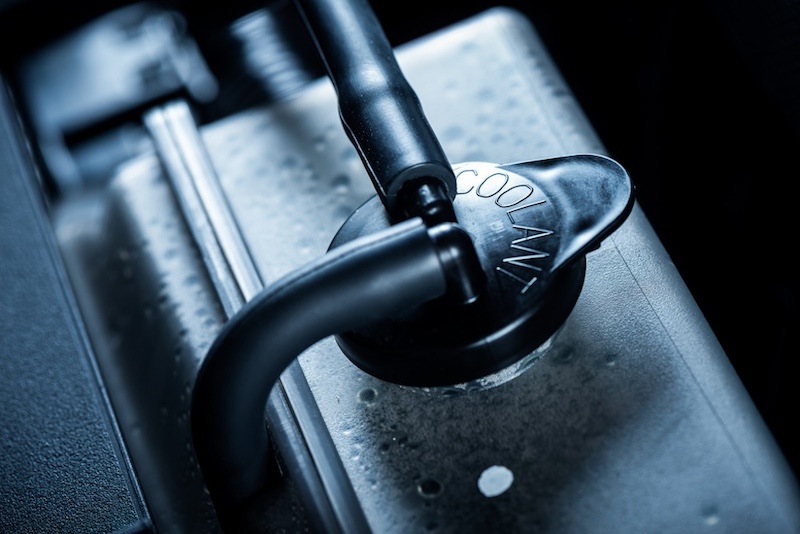
Coolant, a critical blend of antifreeze and water, is not just another fluid in your Ford vehicle; it’s a fundamental component ensuring optimal performance and longevity. Whether navigating the bustling streets of Matthews, NC, or cruising through the serene roads of Mount Holly, NC, coolant plays a crucial role in maintaining your engine’s temperature balance, protecting it from extreme conditions throughout Mint Hill, NC, and beyond.
How Coolant Works in Your Ford
Coolant operates continuously, effectively absorbing heat generated by your engine and transferring it to the radiator, dissipating it into the surrounding air. This process is vital for safeguarding the engine components of your Ford Explorer, F-150, or Mustang, preventing corrosion and ensuring proper lubrication. By understanding these mechanisms, Ford owners in Huntersville, NC, and Indian Trail, NC, can appreciate the importance of regular coolant maintenance.
The Importance of Regular Coolant Maintenance
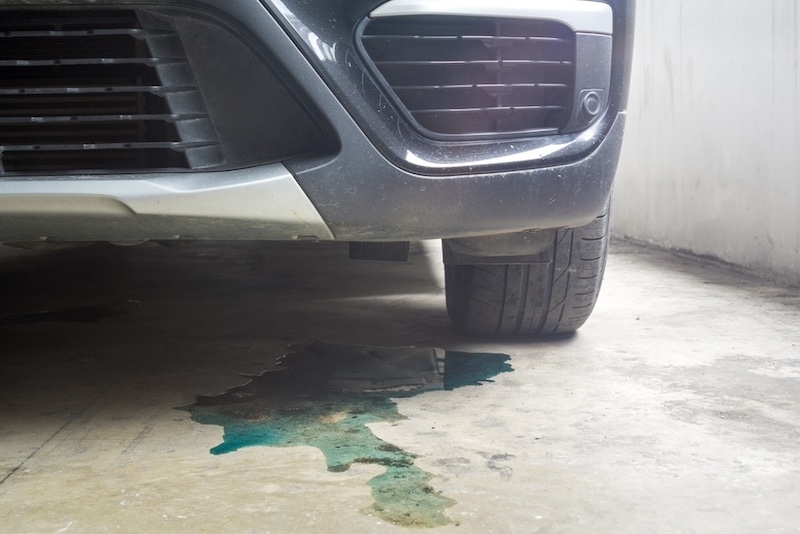
Experts at Ford emphasize the necessity of regular coolant maintenance to uphold the performance and longevity of your Ford vehicle, especially in regions with fluctuating climates like Cornelius, NC, and Concord, NC. Neglecting coolant checks and maintenance can lead to severe engine damage, affecting vehicles ranging from the rugged Ford Raptor to the versatile Ford Maverick.
Understand the importance of engine coolants.
Experience the Mark Ficken Ford Difference
Your Trusted Ford Service Center
At Mark Ficken Ford in Charlotte, NC, we take pride in our comprehensive understanding of Ford vehicles, whether you’re driving the latest Ford Bronco or a classic Ford F-150. Our state-of-the-art service center is fully equipped with advanced diagnostic tools and certified technicians to handle all your coolant-related needs. From routine coolant checks to complex maintenance tasks, our team ensures your Ford vehicle operates at peak performance levels.
Learn about engine coolant functions.
Convenient Service Scheduling
We understand your time is valuable, so we offer convenient online scheduling for Ford service appointments. Whether in Charlotte or neighboring cities like Rock Hill, SC, our user-friendly scheduling portal allows you to book service appointments for your Ford Expedition, Escape, or Raptor easily. Plan your visit seamlessly and experience the convenience of top-notch Ford service at Mark Ficken Ford.
Exploring the Ford Universe
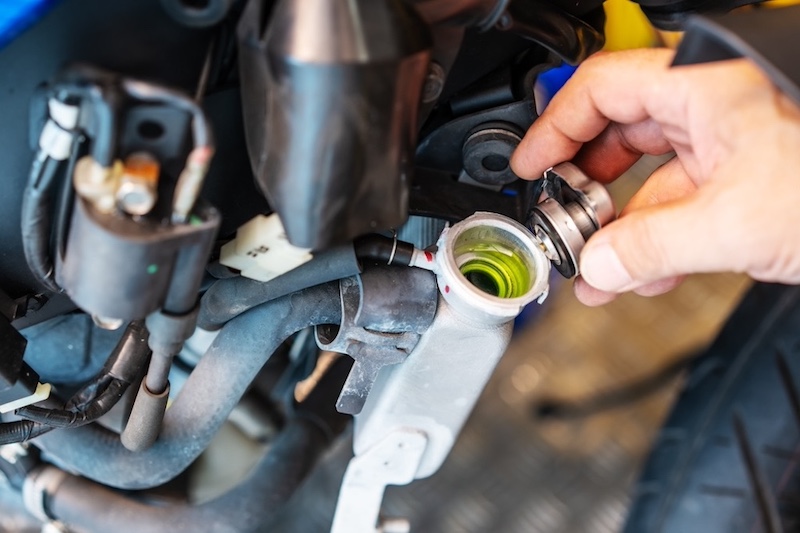
As a premier Ford dealership serving Gastonia, NC, and Kannapolis, NC, we’re committed to providing an extensive inventory of Ford models to suit all driver’s preferences and needs.
Whether you’re in the market for a powerful Ford Mustang or a dependable Ford F-150, our diverse selection showcases Ford’s innovation and reliability. Explore our showroom and discover the latest Ford vehicles, exclusive offers, and incentives for our valued customers.
More Than Just a Dealership
At Mark Ficken Ford, we strive to cultivate a community of Ford enthusiasts who share our passion for exceptional vehicles and outstanding customer service. Whether you’re located in Kings Mountain, NC, or Lincolnton, NC, our team is dedicated to exceeding your expectations and enhancing your Ford ownership experience. From sales to service, we’re here to support you every step of the way.
Conclusion: The Heart of Your Ford – Understanding Coolant
Coolant serves as the lifeblood of your Ford vehicle, ensuring optimal performance and longevity under varying driving conditions. By prioritizing regular coolant maintenance and partnering with a trusted Ford service center like Mark Ficken Ford, you can enjoy peace of mind knowing that your Ford, whether it’s an Explorer, Ranger, or Mustang, is in expert hands. Experience the difference between personalized service and exceptional care at Mark Ficken Ford, your premier destination for all your Ford needs in Charlotte, NC, and beyond.

What Does The Inflation Reduction Act of 2022 Mean For my EV Tax Credit?
Are you an electric vehicle (EV) enthusiast? If so, the 2023 EV Tax Credit could be a great way to save some money.
This credit is available for anyone who purchases or leases an eligible electric car during this time frame. But what exactly does this tax credit apply to and how can you get it? In this article, we’ll explain everything you need to know about getting the 2023 EV Tax Credit.
The original Electric Vehicle Tax Credit was passed by Congress in 2008. It’s designed to help increase the adoption of EVs and make them more affordable for everyday drivers.
In order to take advantage of the current EV Tax credits available, there are certain steps you should take before making your purchase.
We’ll discuss these steps as well as other important information related to the 2023 EV Tax Credit so that you can maximize your savings when buying or leasing an electric car.
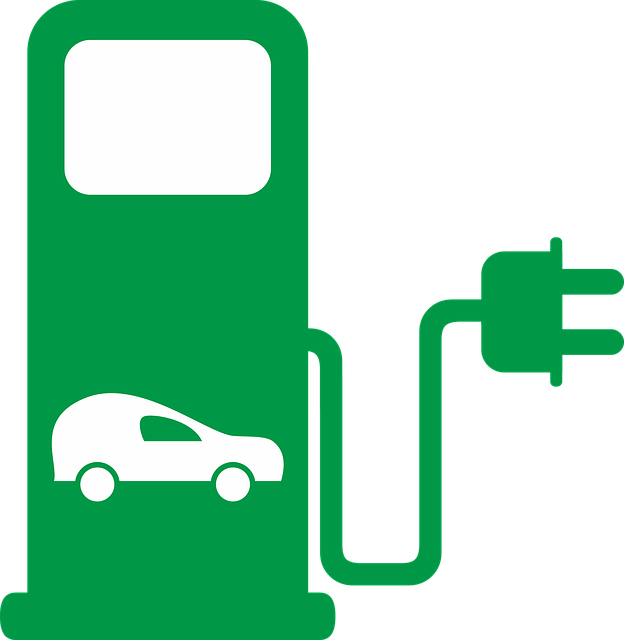
What Requirements Are In Place For North American Supply And Production?
To illustrate the requirements for North American supply and production of electric vehicles (EVs) when it comes to qualifying for the 2023 EV tax credit, let’s look at a case study.
The Electric Vehicle Inflation Reduction Act of 2020 was created in order to incentivize buyers to purchase EVs and reduce emissions.
This act requires that all cars manufactured in North America must be built with high quality standards in order to qualify for the tax credits.
Additionally, manufacturers are required to meet certain inflation reduction goals so as not to increase prices on potential buyers.
By adhering to these guidelines, automakers can ensure they will receive their portion of the 2023 EV Tax Credit while helping lower emissions and encouraging more people to buy electric cars instead of gasoline ones. With this incentive in place, consumers could have access to efficient and sustainable transportation options at competitive rates.
New 2023 EV Tax Credit Guidelines include:
Starting on August 16, 2022, all vehicles purchased up until 2032 must be assembled in North America (Canada, Mexico, or the United States).
Starting in March 2023, the $7,500 credit for new vehicles will be split into two parts. The amount of each part will no longer be based on the size of the battery, but instead there will be different criteria to receive each half of the total credit.
Critical Battery Minerals (50%): In order to be eligible for the $3,750 credit beginning in March 2023, 40% of the critical minerals used in the battery must have either been recycled domestically or sourced from a U.S. mine (or any other country that has a free trade agreement with the U.S.). This percentage will increase incrementally each year; 50% required by 2024, 60% by 2025, 70% by 2026 and 80% by 2027.
Battery Components (50%): Beginning in March 2023, an EV is eligible for a remaining $3,750 credit if at least 50% of its battery components are manufactured or assembled in the U.S. (or any other country that has a free-trade agreement with the U.S.). This percentage will increase every year: 60% in 2024-2025, 70% in 2026, 80% in 2027, 90% in 2028 and 100% by 2029.
If you’re thinking of buying an electric vehicle (EV) that is assembled in North America, but may not meet either or both battery requirements, rest assured that the full $7,500 tax credit will still be available until March 2023. This new rule was announced by the Treasury Department and will go into effect during their March update.
As of January 1, 2024, vehicles will be ineligible for certain standards if their battery components were sourced from a “foreign entity of concern,” such as China and Russia (as well as Iran and North Korea). On January 1, 2025, this exclusion will expand to include critical battery minerals. This is significant because China has been a major provider of these minerals up until now.
What Are the New Vehicle Prices And Buyer Income Levels?
The price limit for new SUVs, vans and pickup trucks is $80,000 and any other qualifying vehicle is no more than $55,000.
The income limits for purchasing a new vehicle are based on the modified adjusted gross income (MAGI). This figure is calculated by taking the adjusted gross income from either the current or previous tax year and adding back in certain allowable deductions. The thresholds of MAGI required to qualify for a new car purchase vary depending on filing status:
Joint tax returns or surviving spouse: MAGI must be less than $300,000
Head of household: MAGI must be less than $225,000
Individual or any other filing status: MAGI must be less than $150,000
Does It Apply To EV And PHEV Leases?
Starting in 2024, the IRS defines the original user of a leased vehicle as the company that leased it to you (often the manufacturer). The tax credit goes to this leasing company, who are not obligated to pass on those savings to you but may do so – so it’s worth asking. This credit can be applied directly as a discount towards your lease payment.
This means that if you’re planning on getting a Porsche Taycan, you can qualify for the tax credit, regardless of whether you buy or lease it.
However, some states may also offer their own incentives in addition to this one. As such, if you want to take advantage of both state and federal tax credits when leasing your EV or PHEV, make sure to check what’s available in your area before signing any contracts.
Is There A Tax Credit For Used EV Models?
Starting on January 1, 2023, the rules for used EVs include a tax credit of either 30% of the vehicle’s value or $4,000 (whichever is less). However, many states offer incentives or rebates on the purchase of a used EV that can help offset some of the cost. In order for a used EV vehicle purchase to qualify:
Used Vehicle Price Limit:
The maximum sale price for all used electric vehicles (EVs) is $25,000.
Used EV Vehicle Income Limits:
For joint tax returns or a surviving spouse, the maximum Adjusted Gross Income (MAGI) must be no more than $150,000.
For those filing as head of household, their MAGI must not exceed $112,500.
All other filing statuses have a limit of $75,000 for MAGI.
EV Used Vehicle Credit Eligibility:
To be eligible for the used EV tax credit, the vehicle must be:
At least two model years older than the calendar year in which it is purchased.
Must purchased through a dealer.
Must be for personal use and not for resale.
Only an individual may claim this credit.
Once a buyer has taken the federal used EV credit, they will not be eligible to receive another one within three years.

List Of New Vehicles That Qualify For EV Tax Credits
As of February 3, 2023, the following vehicles qualify for a $7,500 federal EV tax credit because they are assembled in North America. The exact tax credit amount and list of eligible vehicles may change after March 2023 when the specific battery production requirements have been established.
It’s a good idea to double-check the build location of any vehicle you’re interested in, regardless if it is on the list or not. To do this, you can use a VIN decoder and look for the country name in the “Plant Information” field at the bottom of the page. Alternatively, you may check its window sticker if you have access to it.
Additionally, keep in mind that the vehicle must be purchased for its original use – meaning not for resale – in order to qualify for federal tax credit. Buying and immediately reselling it won’t allow you to benefit from such credit.
2023 Audi Q5 Plug-In Hybrid
2021-2023 BMW 3 Series Plug-In Hybrid
2023 Cadillac LYRIQ
2022-2023 Chevrolet Bolt EV
2022-2023 Chevrolet Bolt EUV
2022-2023 Chrysler Pacifica Plug-In Hybrid
2022-2023 Ford Escape Plug-In Hybrid
2022-2023 Ford F-150 Lightning
2022-2023 Ford Mustang Mach-E
2022-2023 Ford E-Transit Cargo Van
2022-2023 Jeep Grand Cherokee 4xe
2022-2023 Jeep Wrangler 4xe
2022-2023 Lincoln Aviator Plug-In Hybrid
2022-2023 Lincoln Corsair Plug-In Hybrid
2021-2023 Nissan Leaf
2022-2023 Rivian R1S
2022-2023 Rivian R1T
2022-2023 Tesla Model 3
2022-2023 Tesla Model Y
2023 Volkswagen ID.4
2022-2023 Volvo S60 Plug-in Hybrid
How To Claim Your Ev Tax Credit
If you’re purchasing an eligible electric vehicle in 2023, your tax representative should be knowledgeable about how to fill out the necessary forms. Additionally, if you are utilizing tax software, it will guide you through the process for claiming the credit when filing taxes in 2024. Starting from that year onward, you can choose to transfer the EV tax credit directly to your qualified dealer at the time of purchase as a discount on your car purchase instead of having to wait until tax season.
Steps For Claiming Your EV Tax Credits:
First, gather all necessary documents associated with your purchase including receipts, invoices and proof that the vehicle was acquired new from a dealership.
Second, complete IRS Form 8936 which will help determine if you are eligible for the tax credit as well as calculate the amount of credits you can receive. This form must be completed and submitted along with your annual income tax return when filing taxes.
Third, check with your state government or local municipality to find out if there are any additional incentives or rebates that could reduce the total cost of purchasing an EV even more.
What If I Got My Ev Tax Credit Before The Inflation Reduction Act?
The Inflation Reduction Act was put in place to reduce the amount of EV tax credit available for certain vehicles purchased after December 31, 2021. But what if you already got your EV tax credit before then? The answer is simple:
Your credit will not be affected by the new law. You are still eligible for the full $7,500 federal tax break regardless of when you purchase your qualifying electric vehicle.
However, there are some caveats that come with claiming your EV tax credit before the Inflation Reduction Act was passed. First, it’s important to make sure that you have all necessary paperwork and documentation on hand in order to prove that you did indeed purchase an eligible electric vehicle prior to the act being signed into law.
Additionally, it’s also important to keep track of any changes made to state or local incentives as they may impact how much of a deduction you can claim. Finally, don’t forget to factor in any other applicable credits like those from utility companies when filing taxes for the year.
What If I Purchased An Qualifying Ev Before The Inflation Reduction Act Was Passed?
If you purchased a qualifying electric vehicle (EV) before the Inflation Reduction Act was passed, then you are still eligible to receive a tax credit.
These credits may be applied towards any federal income taxes owed for that year. This allows individuals who have already made the investment in a qualifying EV to get some relief from their taxes due.
If you purchased an eligible electric vehicle (EV) or plug-in hybrid electric vehicle (PHEV) prior to August 16, 2022, the tax credit should still be applicable towards your 2023 income taxes even if that specific model is no longer on the approved list. Similarly, if you had a written binding sales contract prior to August 16 but take delivery of the vehicle in 2023, these older rules of the tax credit should still apply.
The federal incentive has often been referred to as a flat $7,500 credit; however, it will only reduce your federal tax bill up to $7,500 and any unused portion cannot be applied against future years’ taxes due to it being nonrefundable.
If you are leasing an EV, note that this tax credit goes directly to the manufacturer offering the lease instead of accruing for yourself. Additionally, some PHEV models may qualify for less than the full amount; with Toyota Prius Prime plug-in hybrid’s example qualifying for only a $4,502 tax credit.

Which Cars & SUVs Qualified For The Previous EV Tax Credit?
The previous section discussed purchasing an electric vehicle (EV) before the Inflation Reduction Act was passed. Now, it’s important to understand which cars and SUVs qualified for the previous EV tax credit.
The Internal Revenue Service listed many eligible vehicles that were released between January 1, 2018 and December 31, 2020. These range from passenger vehicles like sedans and hatchbacks to larger SUVs and trucks. Certain luxury models also qualify but only those with a base price of less than $60,000 are included in the list of approved EVs.
Generally speaking, any plug-in hybrid or all-electric car qualifies for the tax credit if purchased within this period. Depending on when you purchased your qualifying EV, you may be entitled to up to $7,500 back from the federal government as part of this incentive program.
List of EV Cars & SUVs That Previously Qualified For Federal EV Tax Credits:
Audi e-tron GT
Audi RS e-tron GT
Audi e-tron SUV
Audi e-tron Sportback
Audi Q4 e-tron
Audi Q4 Sportback e-tron
BMW i4 eDrive40 Gran Coupe
BMW i4 M50 Gran Coupe
BMW iX xDrive50
Ford Mustang Mach-E
Ford E-Transit
Hyundai Ioniq 5
Hyundai Kona Electric
Jaguar I-Pace
Kia EV6
Kia Niro EV
Lucid Air
Mazda MX-30
Mercedes-Benz EQS sedan
Mini Hardtop Electric
Nissan Leaf
Polestar 2
Porsche Taycan
Porsche Taycan Cross Turismo
Porsche Taycan Sport Turismo
Rivian R1T
Rivian R1S
Volkswagen ID.4
Volvo XC40 Recharge
List of Plug-In Hybrids Cars & SUVs That Previously Qualified For Federal EV Tax Credits:
Audi A7 Plug-in Hybrid
Audi Q5 Plug-in Hybrid
Bentley Bentayga Plug-in Hybrid
BMW X5 Plug-in Hybrid
BMW 3 Series Plug-in Hybrid
BMW 5 Series Plug-in Hybrid
BMW 7 Series Plug-in Hybrid
Chrysler Pacifica Plug-in Hybrid
Ford Escape Plug-in Hybrid Hybrid
Hyundai Ioniq Plug-in Hybrid
Hyundai Tucson Plug-in Hybrid
Hyundai Santa Fe Plug-in Hybrid
Jeep Wrangler 4xe
Jeep Grand Cherokee 4xe
Kia Niro Plug-in Hybrid
Kia Sorento Plug-in Hybrid
Land Rover Range Rover Plug-in Hybrid
Lexus NX 450h+
Lincoln Aviator Plug-in Hybrid
Lincoln Corsair Plug-in Hybrid
Mini Countryman Plug-in Hybrid
Mitsubishi Outlander PHEV
Porsche Cayenne Plug-in Hybrid
Porsche Panamera Plug-in Hybrid
Subaru Crosstrek Plug-in Hybrid
Toyota Prius Prime
Toyota RAV4 Prime
Volvo S60 Plug-in Hybrid
Volvo S90 Plug-in Hybrid
Volvo V60 Plug-in Hybrid
Volvo XC60 Plug-in Hybrid
Volvo XC90 Plug-in Hybrid
Frequently Asked Questions
How Long Does The Ev Tax Credit Last?
In the United States, electric vehicle (EV) owners are eligible for a federal tax credit. But how long does this EV tax credit last? It’s an important question to consider when deciding whether or not to purchase an EV.
The current policy states that the EV tax credit applies until the manufacturer has sold 200,000 qualified EVs in the US market. This means that after this milestone is reached, manufacturers will no longer be able to offer their customers a federal tax credit on new sales of EVs made by them.
The good news is that some popular EV brands have already hit this mark and no longer qualify for the EV tax credit — but many others still do! For example, Tesla has already passed the 200,000-vehicle threshold; however, General Motors has yet to reach it.
So if you’re considering purchasing an EV from one of these qualifying manufacturers before they reach the 200,000-vehicle limit, then now may be a great time to take advantage of the sizable federal tax credit associated with buying an electric car.
Since most manufacturers have different timelines for reaching this milestone, it’s always worth checking with your dealer or doing research online to find out when your preferred brand will become ineligible for the tax break.
What Is The Maximum Amount Of The Ev Tax Credit?
The EV tax credit is an incentive offered by the federal government to help people purchase electric vehicles. The maximum amount of the credit available varies depending on a variety of factors, such as how many vehicles have been sold by a particular manufacturer and when they were made. It’s important to note that the EV tax credit only applies to new passenger cars, light-duty trucks, and motorcycles.
Currently, the maximum amount of the EV tax credit is $7,500 per vehicle purchased before December 31st 2023. After this date, it will begin phasing out for each manufacturer until it reaches zero in 2024.
However, if you buy an eligible vehicle after December 31st 2023 but before January 1st 2025, then you may still be eligible for a partial amount of the credit based on the start and end dates of your purchase or lease agreement. Furthermore, there are some additional restrictions regarding eligibility for those who pay taxes at certain levels or with certain credits or deductions.
In order to take advantage of this opportunity and receive up to $7,500 back in applicable taxes owed from your purchase price or lease payment for your electric vehicle (EV), make sure to consult with a qualified tax professional prior to making any decisions about purchasing an EV so that you can maximize your savings while staying within all applicable guidelines.
Is The Ev Tax Credit Refundable?
The question of whether the EV tax credit is refundable has been on many people’s minds.It turns out that for 2021 taxpayers filing as individuals, the maximum amount of the electric vehicle (EV) tax credit is $7,500. Unfortunately, this amount is typically not refundable.
A write-off is a tax deduction that reduces your taxable income, while the federal electric vehicle (EV) tax credit of up to $7,500 is a direct discount on taxes due. A $7,500 write-off would mean you pay $7,500 less in taxes than you would have otherwise; however, an EV tax credit provides much more savings since it’s effectively a handout for up to $7,500. To maximize the benefits when buying an EV, make sure to look into the list of state EV incentives maintained by the U.S. Department of Energy (DOE).
Can I Combine The EV Tax Credit With Other Tax Credits?
First, it’s important to understand that the electric vehicle (EV) tax credit allows you to subtract a certain amount from the taxes you owe on your federal income tax return. The exact amount depends on the type of car purchased and when it was bought. In general tax credits can typically be combined to reduce your overall taxable income.
For example, if you purchase an energy efficient car or install solar panels at home, both of these actions may make you eligible for additional government incentives that could reduce your total taxable income even further. Keep in mind though that there are specific eligibility requirements for each individual incentive program, so it’s best to do some research ahead of time before making any decisions about filing multiple returns.
Conclusion
The EV tax credit is an exciting opportunity to save money on the purchase of a new electric vehicle. This incentive lasts until 2023, so now’s the time to act! The maximum amount you can receive from this credit is up to $7,500.
Although the credit isn’t transferable, you may be able to combine it with other tax credits depending on your individual situation. To make sure you get the most out of this opportunity, consult a professional or research more online.
To summarize: if you’re looking for savings on your next electric car purchase, don’t let this chance slip away like water through fingers; take advantage of the EV tax credit before it’s too late! Its value is immeasurable in its ability to help reduce pollution and put money back into our pockets – a win-win situation that we should all strive towards achieving.
Top Ten Best Tire Brands For Living In North Carolina!
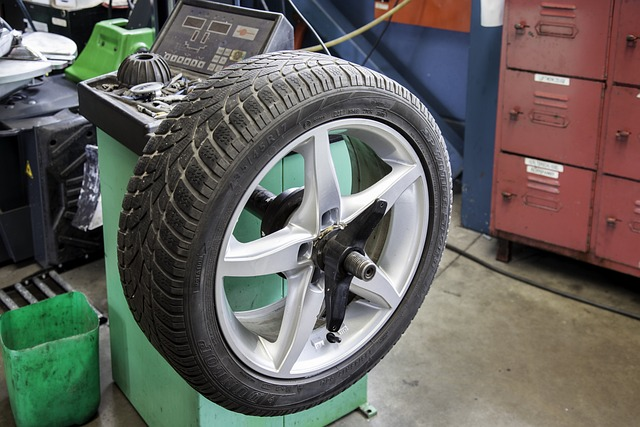
Are you searching for the best tire brands to buy if you live in North Carolina? Look no further! We’ve done all the research and compiled a list of the top ten best tire brands for living in North Carolina. From well-known companies to lesser known gems, we have it all here! Keep reading to find out which tires are best suited for your needs.
Click here to Shop For Tires Now!
Top Ten Tire Brands:
Michelin
Continental
Cooper
Goodyear
Pirelli
Bridgestone
Firestone
Yokohama
BFGoodrich
General
Identifying The Right Tire For North Carolina
When living in North Carolina, it’s important for drivers to find the right tires that work well with their vehicles and road conditions. With so many different tire types available, understanding what each one has to offer can help you make an informed decision. Truck tires are designed specifically for larger vehicles like pickups and SUVs, providing better handling on rougher roads.
Winter tires are made of a softer material that provides enhanced traction when temperatures drop below 45 degrees Fahrenheit. All-season tires provide good performance year-round but may not be suitable for extreme weather conditions such as snow or ice.
Looking for help in buying tires? Click here to schedule a service visit!
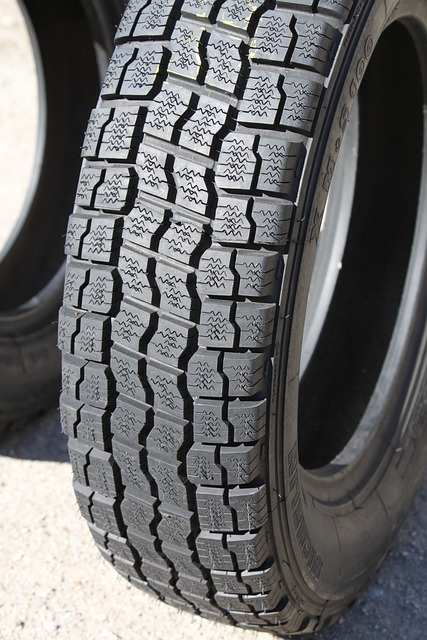
Factors To Consider When Choosing A Tire Brand
When looking for the best tire brands for North Carolina, it’s important to consider several factors. Vehicle type, road conditions and tire size are all key criteria that should be used when selecting a brand. Here’s an overview of what you should keep in mind when buying tires:
Vehicle Type
Passenger vehicles – Cars and light trucks typically require tires with different load ratings than heavier-duty commercial vehicles.
All-terrain or off-road vehicles – These vehicles need specially designed tires that can handle rough surfaces and rocks.
High performance cars – Some high-performance sports cars require specific tires that provide superior grip on dry roads.
Road Conditions
Wet weather driving – Tires with larger tread blocks and deeper grooves will give better traction in wet conditions.
Snowy climates – Choose winter tires if your vehicle is primarily driven in areas where snowfall is common throughout the year.
Hot temperatures – Look for tires with higher speed ratings as they may perform better in hot weather while providing greater handling stability at higher speeds.
Tire Size & Rim Diameter
It’s also important to make sure the tire fits properly on the rim diameter of your vehicle by finding the right fitment code (e.g., P215/65R16). This ensures proper contact between the tire and wheel which helps reduce wear and tear, improves its life and fuel efficiency and maximizes safety.
Click here to schedule a visit with our tire experts!
Durability And Quality Of Tires
The quality and durability of tires is an important factor when selecting the best tire brand for living in North Carolina. The type of terrain and climate in NC can be hard on tires, so it’s essential to purchase ones that are designed to withstand whatever Mother Nature throws their way.
Low rolling resistance tires provide improved fuel economy but may not offer enough grip or traction for driving in wet conditions. It’s also important to consider what kind of vehicles you’re using; certain brands are better suited for particular makes/models than others. When viewing a tire description, look at its tread pattern as well as its warranty information – this will ensure that your chosen set has been built with dependability in mind.

All-Season Performance Versus Seasonal Performance
It’s important to consider all-season performance versus seasonal performance when buying tires for a vehicle in North Carolina. Factors such as wet and dry traction, tire noise level, ride comfortability and overall quality are essential elements that should be taken into account before making the decision of which set of tires is best for your vehicle and needs
All Season Performance Tires: Designed to provide comfort, and handling suitable for most everyday drivers. All-season tires perform well in warm weather, but offer less grip than summer tires, which can lower performance when steering, braking, and cornering in hot temperatures.
Seasonal Performance Tires: These include snow, winter, and summer tires. When driving in severe snow or on the ice, then snow tires are perfect for you. If you’d like something more all-purpose for colder climates, you may prefer winter tires. If you live in more tropical or warmer climates year round, you will be better off buying summer tires.
Costs And Warranties
When it comes to buying new tires, cost and warranty is a major factor. Prices can range from budget-friendly to premium options depending on the brand and model you choose. When selecting your tire, it’s important to get the perfect fit for your vehicle as well as open up more options at different price points. This will give you greater buying confidence when making an informed decision about what type of tire best fits your needs.
Also consider any warranties offered by the manufacturer or retailer that come with the purchase of your tires – this could include protection against road hazards or other types of damage caused over time. Be sure to read all of the details before committing to a particular purchase so that you have peace of mind knowing that your investment is protected in case anything goes wrong down the line.
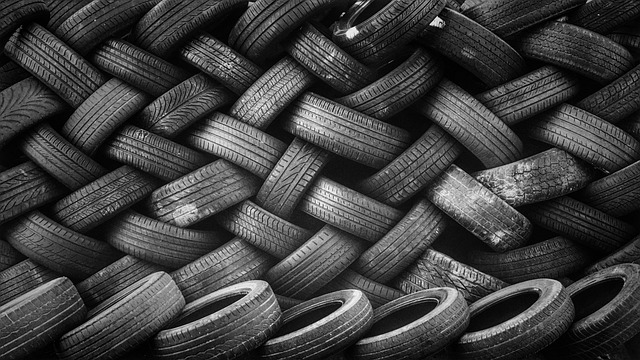
New Vs Used Tires
New tires are a great choice for drivers in North Carolina, as they offer the best quality and performance. Many participating automotive retailers offer deals on new tires that can help make them more affordable. A tire decision guide is available at many of these locations to assist with choosing the right set of tires.
When it comes to purchasing used tires, there are certain risks involved due to their age and wear-and-tear history. Used tires typically have fewer miles left before needing replacement, so it’s important to do an evaluation prior to committing. Additionally, you should always ask about warranties and guarantees before buying used or remanufactured tires. Here are some other things to consider:
Check tread depth – Make sure each tire has at least 4/32nds inch of tread remaining (or 1/8th inch). This is just one factor that can determine if the tire still has enough life left in it and will keep you safe while driving.
Inspect sidewalls – Look closely for any cuts, gouges, cracks or bulges which could all point towards potential problems down the road.
Research brands – Do your research into different tire brands beforehand so you know what kind of value you’re getting out of each type of tire; small differences in construction can make all the difference in traction and handling in wet conditions.
Traction And Handling In Wet Conditions
When living in North Carolina, having the right tires can make a big difference when it comes to traction and handling in wet conditions. There are many potential tires on the market that can provide excellent performance in these situations.
Many automotive retailers offer tire brands that specialize in wet condition driving and can help you choose the best option for your vehicle’s needs.
Goodyear is one of the top tire manufacturers that offers exceptional treads designed specifically for slick roads. The company’s Assurance WeatherReady line provides superior grip on slippery surfaces while maintaining a quiet ride experience.
Bridgestone also has a range of tires with innovative features such as their Hydro-Tread technology which increases water evacuation from the contact patch for enhanced traction even during heavy rainstorms.
Continental has been producing reliable products since 1871 and their ContiProContact model is no exception. This tire offers strong braking power and stability on wet surfaces thanks to its advanced tread pattern design which helps reduce hydroplaning risk.
All three of these companies have dedicated teams of researchers constantly improving upon existing technologies to ensure they produce some of the best performing tires available today.

Rough Terrain Performance
When living in North Carolina, having a good set of tires that can handle rough terrain is essential. Whether you’re commuting to work or taking off-road trips with friends and family, the right tire makes all the difference. Luckily, there are many great brands available for those who live in this part of the US. Here are some of the best tire brands for living in North Carolina:
Yokohama – This brand offers high performance all-terrain tires that provide reliable traction on wet roads as well as rocky surfaces. The tread pattern also helps reduce noise levels when driving on highways.
BFGoodrich – This company’s selection includes several different models designed specifically for various types of terrain and driving conditions. Their Mud Terrain T/A KM3 is especially popular among off-roaders thanks to its aggressive grip and durability.
Firestone Destination LE 2 – If you’re looking for an affordable option with dependable stability and handling, then look no further than this model from Firestone. It provides superior traction when navigating uneven surfaces without sacrificing comfort or road noise.
These three brands offer excellent options for anyone needing reliable tires while living in North Carolina – whether they have a full time job during the week or enjoy weekend adventures off-roading.
Comfort And Road Noise
When selecting the right tires for your vehicle, there are a few important criteria to consider. Comfort and road noise should be at the top of that list when living in North Carolina. Below is a table summarizing the best tire brands available based on these factors:
Michelin – Provide excellent comfort with low road noise levels — making them an ideal choice for North Carolina drivers who want a smooth ride.
Road Comfort: Excellent
Road Noise: Low
Continental – Offer good comfort and medium-low levels of sound from their tires.
Road Comfort: Good
Road Noise: Medium/ Low
Pirelli – Provide excellent comfort but with higher levels of sound than other brands.
Road Comfort: Excellent
Road Noise: High/Medium
BF Goodrich – Provide good comfort and low-medium amounts of road noise.
Road Comfort: Good
Road Noise: Low/ Medium
Yokohama – Features good comfort along with low-medium levels of sound.
Road Comfort: Good
Road Noise: Low/ Medium
All five brands offer quality products that will deliver an enjoyable driving experience in North Carolina’s roads and highways. Taking into account both comfort and road noise, Michelin might be the way to go if you prefer a quieter ride without compromising on performance or cost efficiency.

Conclusion
It’s important to know when you need to replace your tires and what brand will suit your needs best. This will help ensure that you are driving safely, especially in North Carolina where the roads can be rough. We recommend researching different tire brands before making a purchase to make sure it is suitable for your needs.
What To Do If Your Car Overheats

Dealing with an overheating engine while driving can be a bit nerve-wracking, especially if you aren’t sure what to do about it the moment it happens. We want to make sure you are prepared and have the know-how for that “just-in-case” chance it happens to you.
Signs of an overheating engine
If you notice any of the following signs, it’s important to take action immediately to avoid severe damage. First, look for steam or smoke coming from under the hood. This is a sure sign that the engine is too hot. Second, check the temperature gauge. This is another sign of overheating if it’s rising rapidly or is already in the red zone. Also, be on the lookout for strange smells coming from the front of the vehicle. A slightly sweet smell could mean coolant is leaking, or a burning smell could be oil burning in the engine. Either or both smells can be indicative of an overheating engine.
Do you think your engine is close to overheating? Click here to schedule your next service appointment.
What to do when your car overheats
Click here for even more information on overheating engines.
Turn A/C off and crank the heater
The first thing you’ll want to do is turn your A/C off and crank the heater up. This will help remove some of the heat from under the hood and away from the engine.
5 Things To Reduce Engine Temperature
Pull over safely and turn off the engine
As soon as you can, find a safe place to pull over. Once you’re off to the side and out of traffic, turn off your engine. If you continue driving with an overheating engine, you could be seriously damaged.
Use these service coupons to save money on your next service.
Wait 15 min before popping the hood to check things out.
It’s important to give your car time to cool down before checking things out under the hood. If you open it too soon, you could get burned by hot steam or fluid coming out from the radiator cap. After 15 minutes, put on gloves and slowly open the hood. Look at the coolant level and see if it needs to be topped off. The coolant should be at or above the “full” line.
Check out this video on how to fix an overheating engine.
Add coolant if possible.
If you have coolant with you and the engine is cooled down, add some in until it reaches the “full” line again. Be sure to put the cap back on tightly to minimize any more fluid spurting out. You can also use distilled water in an emergency to get you to a service station. Water must be distilled or pure to avoid mineral deposits building up in the radiator.
Click here to learn more about how oil and fluid changes can save your engine.
Cautiously drive your vehicle to a service station.
If you are unable to get the vehicle towed, cautiously drive your vehicle to a service station where it can be properly checked out and repaired if needed. Do not drive too fast or for too long – this could cause further damage!
Safety comes first, so follow these steps to ensure a smooth process. Feel free to contact our service center with any questions or concerns!

1. Be aware of hydroplaning
Hydroplaning is the most dangerous event that can occur while driving in heavy rains. It happens when there’s too much water on the road, causing your car to skid across the water’s surface. As a result, your tires lose traction and you lose control of the vehicle. This is more likely to occur on highways and freeways where water can pool, and cars travel at higher speeds.
To avoid hydroplaning, avoid sudden braking or acceleration, keep your speed at a consistent rate (but do not use cruise control), and try to avoid driving through worn ruts and dips in the road where water is more likely to settle.
You’re driving carefully in heavy rain, but you still end up hydroplaning despite your best efforts to avoid it. What do you do if this happens? It is dependent on your car. If your vehicle has antilock braking (ABS), you can carefully brake as normal. However, if your car does not have ABS, you should pump the brakes softly until you feel the road again. Maintain a straight line with the steering wheel, but if you must turn to avoid a collision, look for an open area to steer towards and move very slowly and cautiously in that direction.
New tires can prevent hydroplaning. Click here to shop for tires now.
2. Slow down and allow for extra stopping time
Heavy rainfall makes it harder to see and increases the risk of hydroplaning. Slowing down helps you see approaching vehicles or obstacles sooner, so you’ll have a better chance of stopping safely when necessary.
Make sure your brakes are working perfectly, click here to schedule a service visit near you.
3. Avoid driving through high water
High water levels that reach up to the bottom of your car doors can damage your vehicle’s electrical system. If you must drive through high water, do so slowly and carefully, and do your best to avoid going too deep.
Have you driven through high water and noticed a change in the performance of your car? Click here to schedule service.
4. Watch out for debris
High winds in a storm may blow branches and other debris across the roadway, which can cause damage to your car, especially if heavy rains obscure your view of them. In areas where large, loose debris is more likely, such as wooded regions or roads with a lot of trees on the sides, decrease your speed and drive cautiously.
Click here to see a list of the most dangerous weather conditions to drive in.
5. Use low beams
When you use your car’s high beams, the light reflects off the road’s water and causes glare from falling rain. This can make it harder to see, especially at night. Low beams will provide enough light without reflecting back into your eyes.
Heavy rains can make driving difficult, but by following these five tips you can feel more confident while behind the wheel.
Need new headlights? Click here to shop for parts now.
Looking for more tips and tricks for driving in dangerous weather? Click here to see more helpful advice!
5 Important Car Warning Lights You Should Know.

Car warning lights are designed to let you know when your vehicle has an issue. They can be related to the engine, fluid levels, tire pressure, or other systems. Each warning light is usually either red or yellow/orange. Red warning lights indicate more serious issues that can be safety hazards, while yellow or amber warning lights often mean something needs to be serviced or you need to operate your vehicle with caution until checked. It’s essential to understand what these lights are trying to tell you as each one has a different meaning, and some can indicate serious problems. Here are some of the most important car warning lights and what they mean.
Let us figure out what your warning lights mean, click here to schedule service today!
Red warning lights
Engine overheat light
This is a thermometer with three parallel lines along the top of the thermometer and wavy lines along the base. This means your engine is overheating, and you must pull over quickly. Check the coolant level and add more if it’s low. You should call a mechanic if the light stays on after adding coolant.
Oil pressure light
This light looks like an old-fashioned oil can and usually comes on when your oil level is low. If this light comes on, you should add oil to your car as soon as possible, as your vehicle cannot run without oil. It’s important to check your oil level regularly and top it off if necessary.
Battery charge malfunction light
This light shows a battery box with “+” and “-” symbols. It indicates that your car’s battery is not charging correctly. If this light stays on while driving, you should take your car to a mechanic to check the battery.
Click here to see if we have any coupons for your needed service.
Yellow/orange warning lights
Check engine light
This light looks like an engine with the word “check” inside of it (it could also be a lightning bolt symbol) and indicates that there’s an issue with your car’s engine. Although it’s not an emergency that requires immediate attention, you should take your vehicle to a mechanic for a check-up. However, if this light continually flashes, this indicates a more serious problem, and you should go to the mechanic as soon as possible.
Low fuel light
This light looks like a gas pump and comes on when your fuel level is low. It’s important to keep an eye on this light as running out of gas can damage your engine. If this light comes on, you should refuel as soon as possible.
Click here to see what the other warning lights stand for!
Resources for more information about car warning lights
If you want to learn more about car warning lights, carwarninglights.net has a comprehensive list of warning lights and other dashboard light symbols for your vehicle and what they mean. You can also find more information in your car’s owner’s manual.
Think your car has a recall? Click here to find out!

Regular car maintenance is essential to keeping your vehicle running smoothly and extending its lifespan. But what kind of maintenance does your car need, and how often should it be done? The best way to stay on top of these maintenance needs is to consult your car’s owner manual. All manufacturers provide suggested routine maintenance schedules to keep your vehicle running optimally. In this post, we will give general routine maintenance guidelines most manufacturers follow, but check your owner’s manual and follow the schedule specific to your car.
Click Here To Schedule Car Service Now!
Every 5,000-8,000 miles
This includes checking all fluid levels: brake fluid, power steering fluid, transmission fluid, windshield washer fluid, and engine coolant. You will also need to replace windshield wipers, get an oil change done and have the oil filter replaced.
Check out local Car Service Specials.
Every 15,000-30,000 miles
You’ll need to have the air filter and fuel filter changed and the power steering fluid replaced. You should also have the brakes checked and inspected for wear at this time, as well as inspect the battery, radiator hoses, suspension system, and engine coolant.
35,000-50,000 miles
In addition to everything from the previous intervals, the spark plugs and spark plug wires will need to be replaced. You will also need to have the drive belts checked for cracks or fraying and replaced if necessary. You need to have the fuel system cleaned and again have the suspension system checked for wear.
Does Your Car Have A Recall? Click Here to find outl
60,000-75,000 miles
You’ll again need to repeat most of the general maintenance tasks from previous intervals plus a few additional ones:
- Inspect or change the engine drive belts
- Check or change transmission fluid
- Check or change brake pads or shoes
- Inspect brake rotors or drums
- Inspect hoses
- Inspect exhaust system
- Check ball joints and chassis
- Inspect steering system
- Check shocks or struts
- Check suspension springs
- Check wheel alignment
90,000-100,000 miles
By this point, you will need to give your car a very thorough inspection, looking for any signs of wear or tear. All the fluids should be replaced, the hoses and belts inspected, and the brakes, suspension, and steering systems checked. You will most likely need the engine timing belt replaced at this interval. This inspection is the most costly as it requires checking everything on your vehicle, ensuring everything is in good working order, and replacing what is worn out or broken.
While routine maintenance needs will vary somewhat based on the make and model of your vehicle and driving habits, these general guidelines can give you a good idea of what to expect. As you can see, a lot is needed to keep your car in optimum running condition. Still, by following the manufacturer’s suggested maintenance schedule and regular maintenance, you can avoid more costly repairs and ensure that your car will provide years of trouble-free service.
Remember to consult your car’s owner manual for specific maintenance recommendations.
Recently In A Car Accident? Click here to get an estimate on repairing your cars body damage.
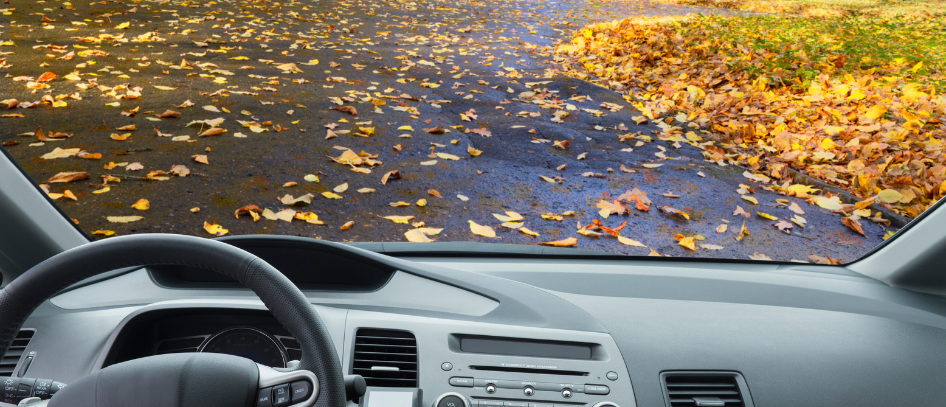
Fall Car Care Tips to Prepare for the Change in Seasons
As the leaves begin to change color and the weather starts to cool down, it’s essential to ensure your car is prepared for the change in seasons. Just like you need to prepare your home for the colder months, your car needs some special attention too. With a few simple tips, you can prepare your vehicle for Fall and avoid any stressful surprises come wintertime.
Want to service your car in Charlotte? Click here
Check Your Lights
As the days start to get shorter, you’ll find yourself driving in the dark more often. You’ll want to ensure that your headlights, taillights, brake lights, and turn signals are all working properly. Not only is it unsafe to drive with faulty lights, but you could also get pulled over. Checking your lights regularly is a quick and easy way to help ensure your safety and compliance with the law.
Check Your Heater and Defroster
After a long hot summer, it’s easy to forget about your car’s heater and defroster. But trust us, you’ll be glad they’re working once the temperatures start to dip! Before the cold weather arrives, take some time to test out your heater and defroster to make sure they’re both in good working order. Nothing is worse than being stranded in a freezing cold car with a heater that doesn’t work!
Click here to see available maintenance services near you.
Check Your Wiper Blades
Wiper blades are another vital safety feature you will want to take care of before winter hits. As a general rule of thumb, you should replace your windshield wiper blades yearly. If it has been a while since you’ve changed them, Now is the time to do it. You don’t want to be caught in a rainstorm or snowstorm with old, worn-out wiper blades!
Have Your Brakes Inspected Regularly
It’s always a good idea to have your brakes inspected by a professional at least once per year, but if you notice any sounds when you brake, you may want them inspected sooner. Fall is a great time to do it because it’s before winter weather sets in (when you’re going to need them most!). Be sure to take your car to a professional so that they can properly inspect and service your brakes.
Click here to learn more about Brake Repair Services in Charlotte.
Check Your Tires’ Tread Depth
The tread on your tires helps provide traction on wet or icy roads. So it’s essential to ensure that your tires have enough tread before winter arrives. The penny test is an easy way to check tread depth at home. Simply insert a penny into the tread with Lincoln’s head pointing down. If the top of Lincoln’s head is visible at any point, then it’s time for new tires! Tires should generally be replaced when they reach 4/32″ tread depth remaining. But if you live in an area with extreme winters, you may want to consider replacing them sooner.
By following these simple car care tips you’ll keep your vehicle in top condition this autumn.Click

The sun can be a powerful force, and it’s no secret that it can cause some damage to the interior of your vehicle. Ultraviolet (UV) radiation from the sun can fade, discolor, and damage the upholstery, leather, dashboard, and other materials in your car. This can lead to costly repairs later on.
It’s important to protect the interior of your vehicle from the sun to prevent this from happening. There are several ways to do this that can help keep your car looking new for longer.
Tint your windows
Tinting your windows helps to reduce the amount of ultraviolet (UV) radiation that enters your car, and also keeps your car cooler by blocking out some of the heat from the sun.
Not all tint films are created equal, so you want to be sure to install a high-quality tint film, like ceramic tint, to block out 80-98% of the UV rays that cause most damage inside your vehicle.
Don’t just take our word for it. Click here for more information,
Sun shades
Sun shades help protect the inside of your car from the sun and keep your car cooler during the summer months. They reflect sunlight away from your car and some even have UV-resistant coating to block out UV rays. You can buy sun shades for the windshield, side windows, and rear window.
Your dashboard is one area that receives a lot of sun exposure, so a windshield sun shade is especially important to protect your dashboard from fading, peeling, or cracking from too much sun exposure.
Looking For Sun Shades Check Out Our Accessory Stores.
Seat covers
Seat covers that are made of UV-resistant or treated materials will best protect your car seats from sun damage. Seat covers are also great for protecting your seats from stains and general wear and tear.
Conditioning for leather seats
Leather seats are especially susceptible to UV and heat damage since they are made of natural material and not synthetic. Too much exposure to sunlight and high temperatures can cause leather seats to dry out, crack, fade in color, and become brittle. In addition to using the protective measures we mentioned above, you want to regularly use a leather cleaner and conditioner to help keep the leather hydrated and in its best condition.
Want to get your leather seats treated in Charlotte? Click here to schedule an appointment.
Park in the shade
One easy measure you can take to protect the interior of your car is by being vigilant to park in the shade whenever possible. This will help reduce the amount of sun exposure that your car is exposed to and help keep the interior temperature cooler.
Looking for a new Ford Truck? Click here to shop Ford Trucks for sale near you.
Park in a garage
If you have the option to park in a garage, this is the best way to protect your car from sun damage. Your car will be fully shielded from sunlight and won’t be exposed to high temperatures for extended periods of time.
These options listed are some of the best measures you can take to protect your vehicle’s interior from sun and heat damage, and keep it looking new and vibrant throughout the lifespan of your vehicle.
Click here for extra tips to protect your interior.
How to Get that New Car Smell Back in Your Car

People love the smell of a new car. New car smell is one of the most iconic and instantly recognizable scents in the world. It’s a nostalgic reminder of all the exciting possibilities and adventures ahead. A fresh scent that fills your car with the promise of a new journey, each time you get in. But over time, that new car smell fades away, and the staleness of day-to-day errands and take-out sets in.
How can you get that “new car smell” back and bring that sense of vibrancy back inside your vehicle? Read on to find out how!
What “new car smell” actually is.
Contrary to popular belief, the new car smell is not simply a combination of all the materials used in the car’s interior. In fact, it’s largely created by the chemicals used in the production of plastics and adhesives used in cars. When exposed to air, it breaks down and releases a strong, distinct odor that is otherwise known as that “new car smell.”
You can get that new car smell back when getting your car serviced.
Why “new car smell” fades
The chemicals that create the new car smell start to dissipate quickly just weeks after a new vehicle has finished production.
With everyday travel to work, family trips, take-out stops, and family outings with the dog, the build-up of dirt, debris, food odor, and pet hair all contribute to a new but unpleasant smell that hides the smell you want.
Air freshener won’t bring it back
Plenty of air fresheners on the market may mask unpleasant odors for a time, but even if a “new car” air freshener has the right smell, it won’t actually bring it all back because the underlying cause behind the stale, stuffy, and now unpleasant odors emanating from inside your vehicle hasn’t been resolved.
Click here to schedule your Ford Service Today
How to really get new car smell back
The simple solution: Keep the interior of your car really clean. Dirty interiors make for dirty smells. A clean, deodorized interior makes room for that “new car smell” to be more noticed, and keeps your car smelling fresher longer.
There are a few simple things you can do to get rid of bad-smelling odors and bring back that new car smell:
- Get rid of any trash, clutter, or unnecessary items that are taking up space in your car.
- Vacuum all the upholstery and floorboards to remove any odor-causing particles. Be sure to get behind, and around everything you can!
- Wash all the soft surfaces in your car with a specialized cleaning product that is safe for your car’s interior. This will help to remove any remaining odor-causing particles.
- Wipe down all the hard surfaces in your car with a safe cleaner.
- Don’t forget to thoroughly clean the air vents and change your air filter to make sure your vehicle is circulating the cleanest air into your vehicle.
By following these simple steps, you can easily get rid of bad-smelling odors and bring back that unforgettable new car smell.



![[Facebook]](https://www.fordlincolncharlotte.com/blogs/594/wp-content/plugins/bookmarkify/facebook.png)
![[LinkedIn]](https://www.fordlincolncharlotte.com/blogs/594/wp-content/plugins/bookmarkify/linkedin.png)
![[Twitter]](https://www.fordlincolncharlotte.com/blogs/594/wp-content/plugins/bookmarkify/twitter.png)
![[Yahoo!]](https://www.fordlincolncharlotte.com/blogs/594/wp-content/plugins/bookmarkify/yahoo.png)
![[Email]](https://www.fordlincolncharlotte.com/blogs/594/wp-content/plugins/bookmarkify/email.png)

